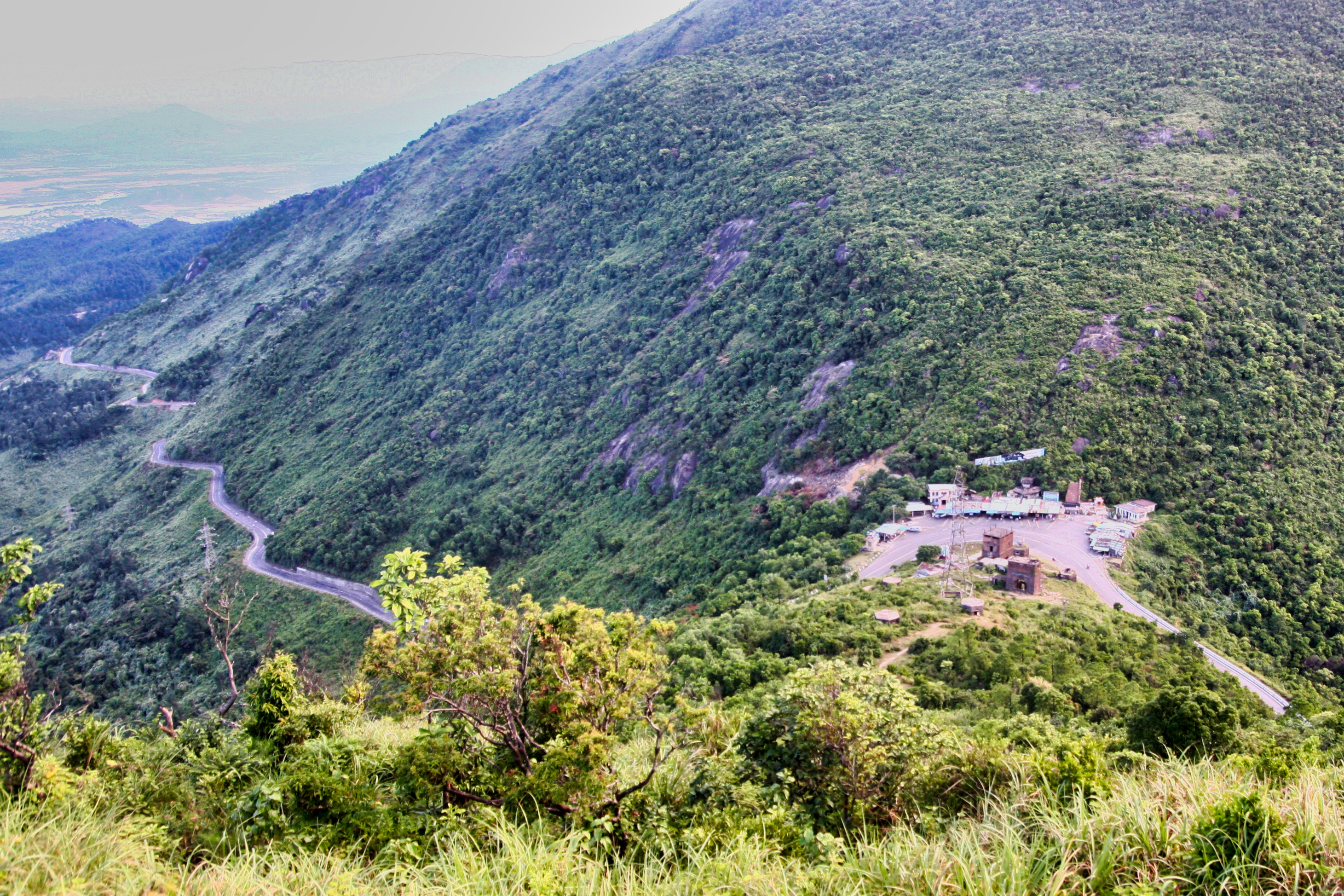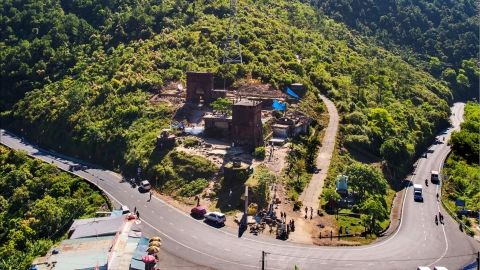ancient pass on dangerous mountain pass
Hai Van Pass is not the longest pass, not the highest pass, and not necessarily the most dangerous pass, but it is perhaps the most special pass in Vietnam, because it is located in a very dangerous position on the North-South highway.
On one side are rolling green mountains, on the other side is the deep blue sea: between the cloud-covered mountain pass, looking to the South is Da Nang Bay with a curved golden sandbank in the sunlight, looking to the North is Lang Co beach, straight in a line, hazy in the mist - an extremely majestic landscape.

A corner of Da Nang glows in the early morning sun
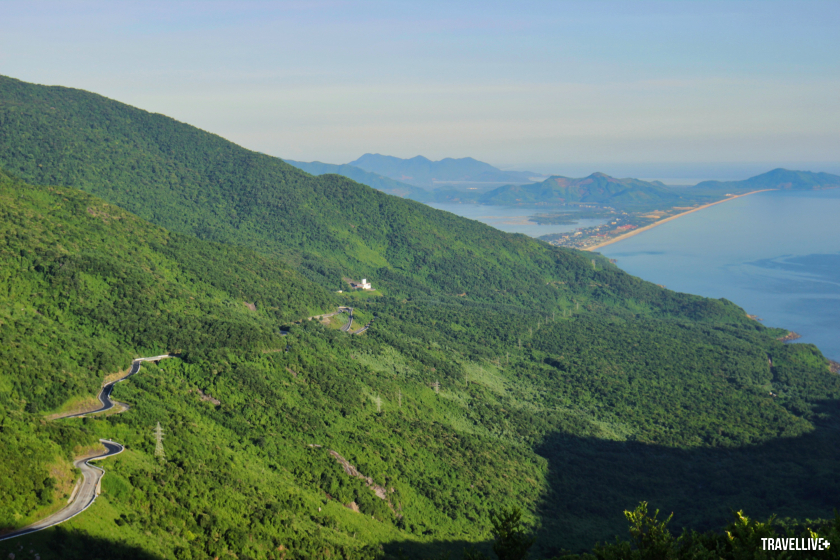
Lang Co beach stretches straight towards Chan May cape.
Hai Van Quan - the pass on top of the pass - probably existed since the Tran Dynasty, because according to legend, the title "Thien ha de nhat hung quan" of this pass was given by King Le Thanh Tong when he personally led an army to attack Champa in 1470-1471, meaning that the pass on top of Hai Van Pass had existed since the previous period.
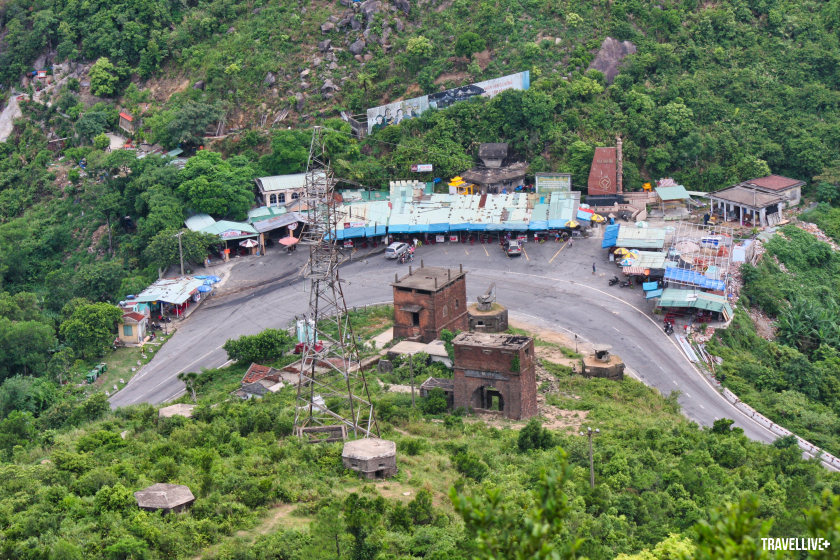
Hai Van Pass Peak
It was not until the Nguyen Dynasty that Hai Van Quan received special attention, perhaps because during the Tran and Le Dynasties, the capital was far away in Thang Long in the North, while during the Nguyen Dynasty, the capital Hue was not far away.
For the Nguyen Dynasty, Hai Van Quan held a particularly important position at the southern gateway of the capital. The remaining solid brick-built gate relics on the top of the pass that we see today are a remaining part of the “Hai Van Defensive Rampart” - the southernmost defensive belt of the Hue Citadel - built by the Nguyen Dynasty in 1826.
Become a defensive rampart south of Hue Citadel
In the early 20th century, the road over the pass was not in the position we see today, but it ran from Da Nang through the Da Nang gate (blue X on the Hai Van Defense Ramparts map), around the Hue gate (blue Y) and then down towards Hue.
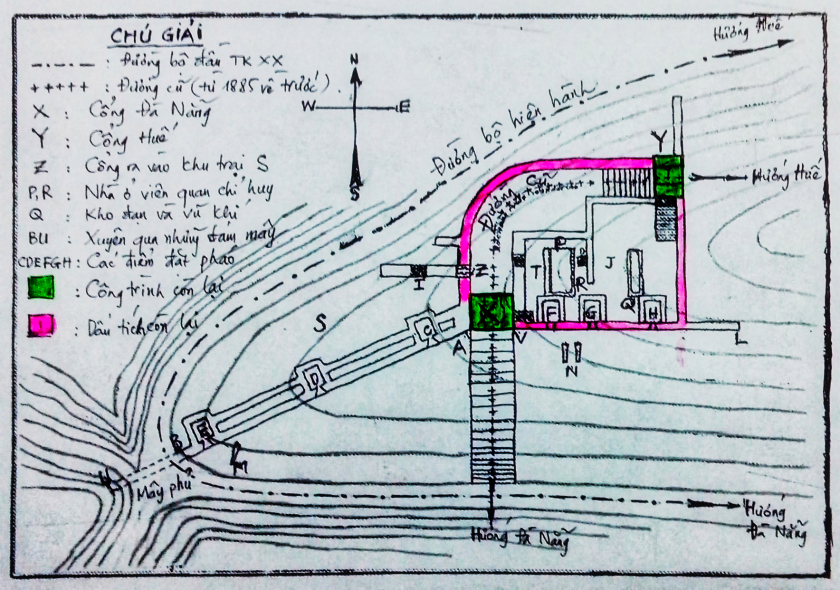
Hai Van defensive rampart in the early 20th century (redrawn from the map in the magazine Friends of the Ancient Capital of Hue)
In 1921, a Frenchman named H. Cosserat described "Defensive rampart on Hai Van Pass" - in the magazineFriends of the ancient capital of Hue (BAVH) -includes a series of structures blocking the mountain pass, including:
- Da Nang Gate, Hue Gate - to this day the relics are still quite intact. (The brick floor above these two gates was built later during the war, used as a bunker to guard the mountain pass).
- Two walls blocked ABU and VL roads, of which today BL section is the existing road surface, VL section and the wall connecting VL to Hue gate still have remains.
- On the two walls ABU and VL there were artillery positions C, D, E, F, G, H which are now lost.
- The curved stone wall, which covers the entire length of the Da Nang gate to the Hue gate, still has traces of its foundation.
- The P, R, Q, T, J structures have been completely lost.

Two gates of Hai Van Quan: Hue gate and Da Nang gate
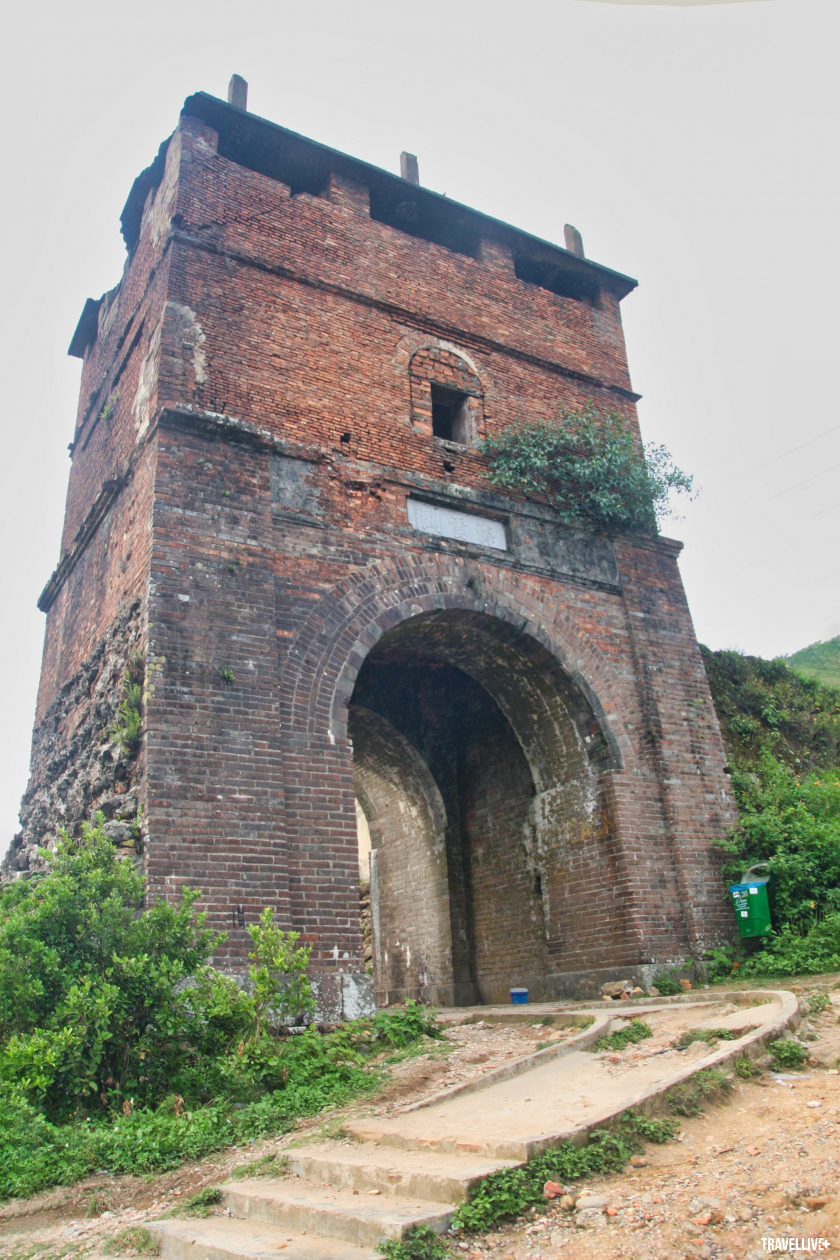
Danang Gate, facing south (looking toward Danang). The brick upper floor was built during the war in a later period.
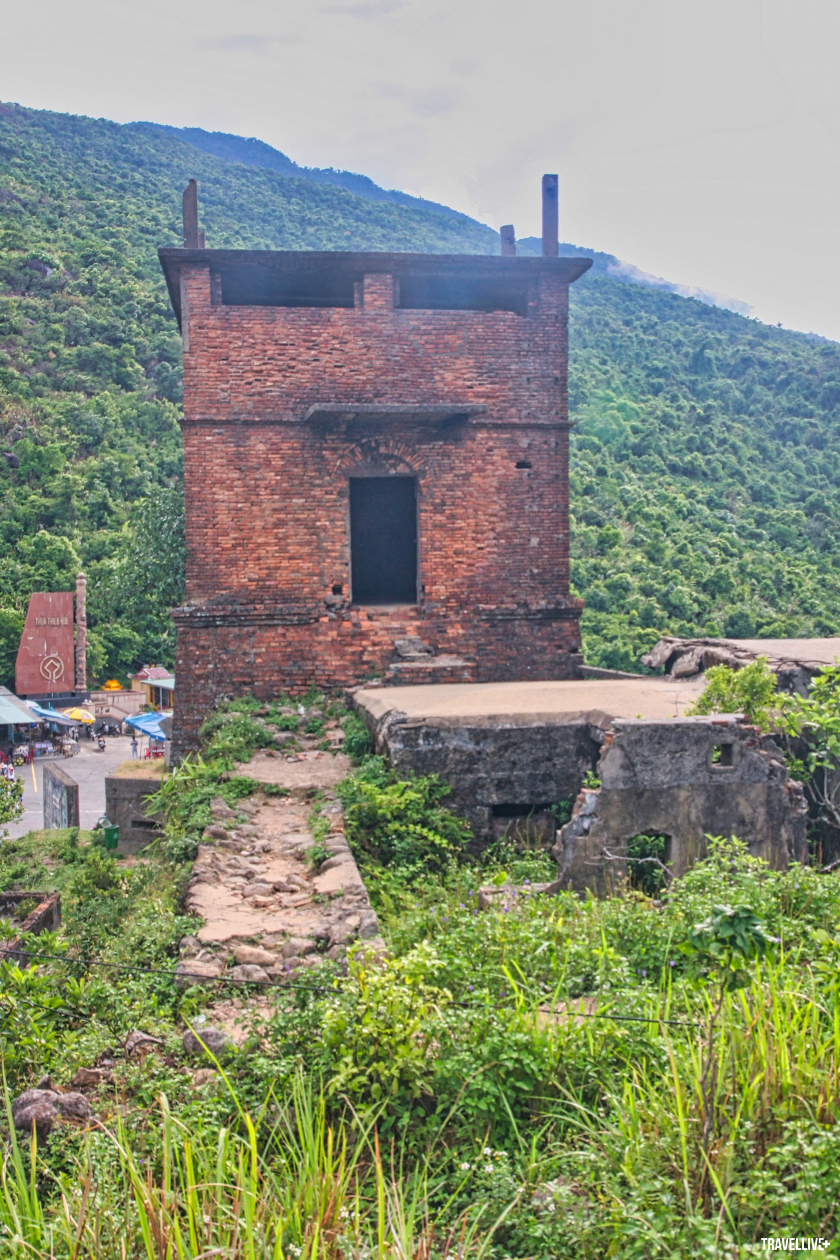
Partial remains of the VL wall extending from the side of Da Nang Gate to the East.

Stone slab on the forehead of Da Nang gate. Large letters: "Hai Van Quan". Vertical letters: "Built on an auspicious day in the seventh year of Minh Mang" (1826).
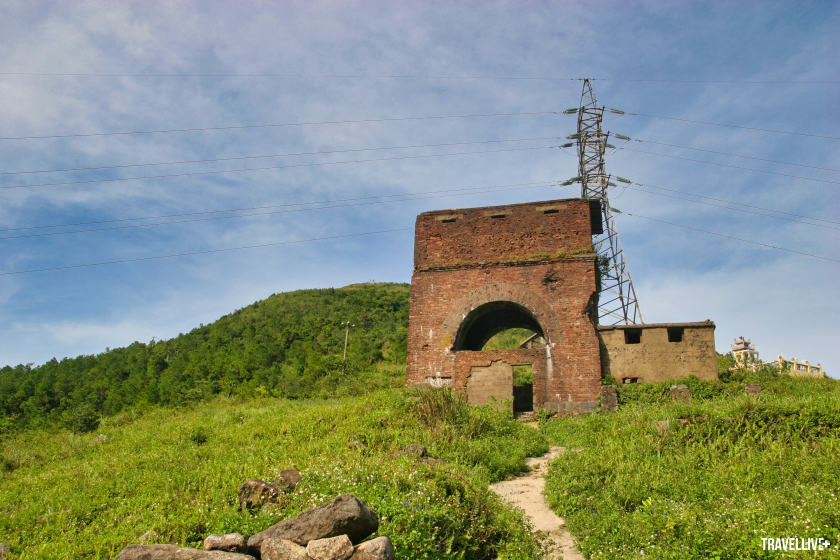
Hue Gate, the inner side of the defense cluster (west direction)
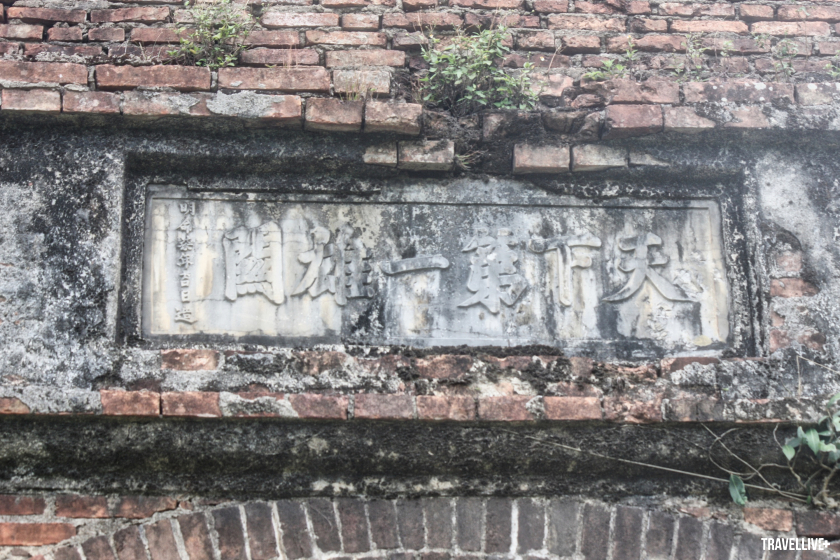
Stone slab on the forehead of Hue gate (East). Large inscription: "Thien ha de nhat hung quan".
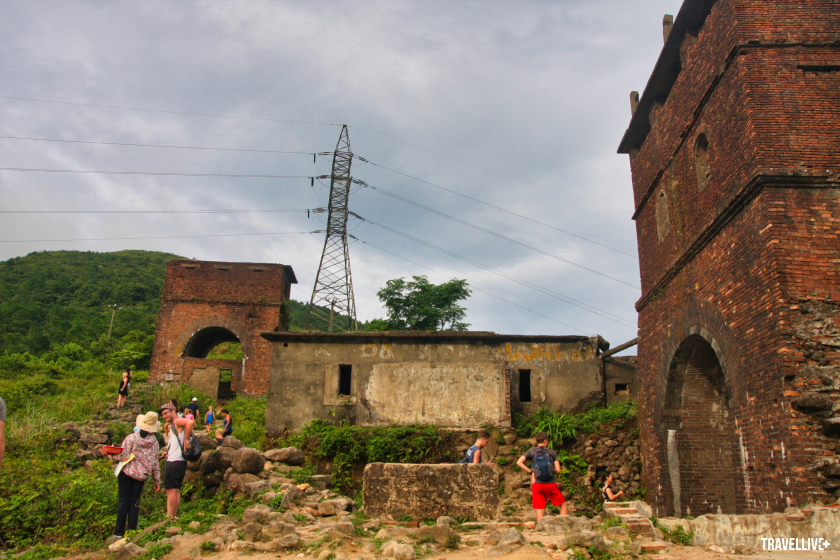
Remains of the curved stone wall, hugging from Da Nang gate to Hue gate.
Become abandoned
According to H. Cosserat, in 1876, the Hai Van defense rampart was guarded by an army of about 50 people under the command of a military officer, but in early November 1885, a tourist named C. Paris recorded that at Hai Van Quan at that time there was only "a captain and 5 Annamese soldiers guarding", and on December 15, 1885, when General Prudhomme passed Hai Van Quan: "... reaching the top of the pass, the soldiers were exhausted and tired, and had to rest in a stone fortification, a defense for the long-abandoned passageway...".
This means that the Hai Van guard station was actually eliminated sometime between November 15, 1885 and December 15, 1885.
In a flash, more than 136 years have passed and Hai Van Quan has become deserted.

Danang Gate, looking towards Danang Bay
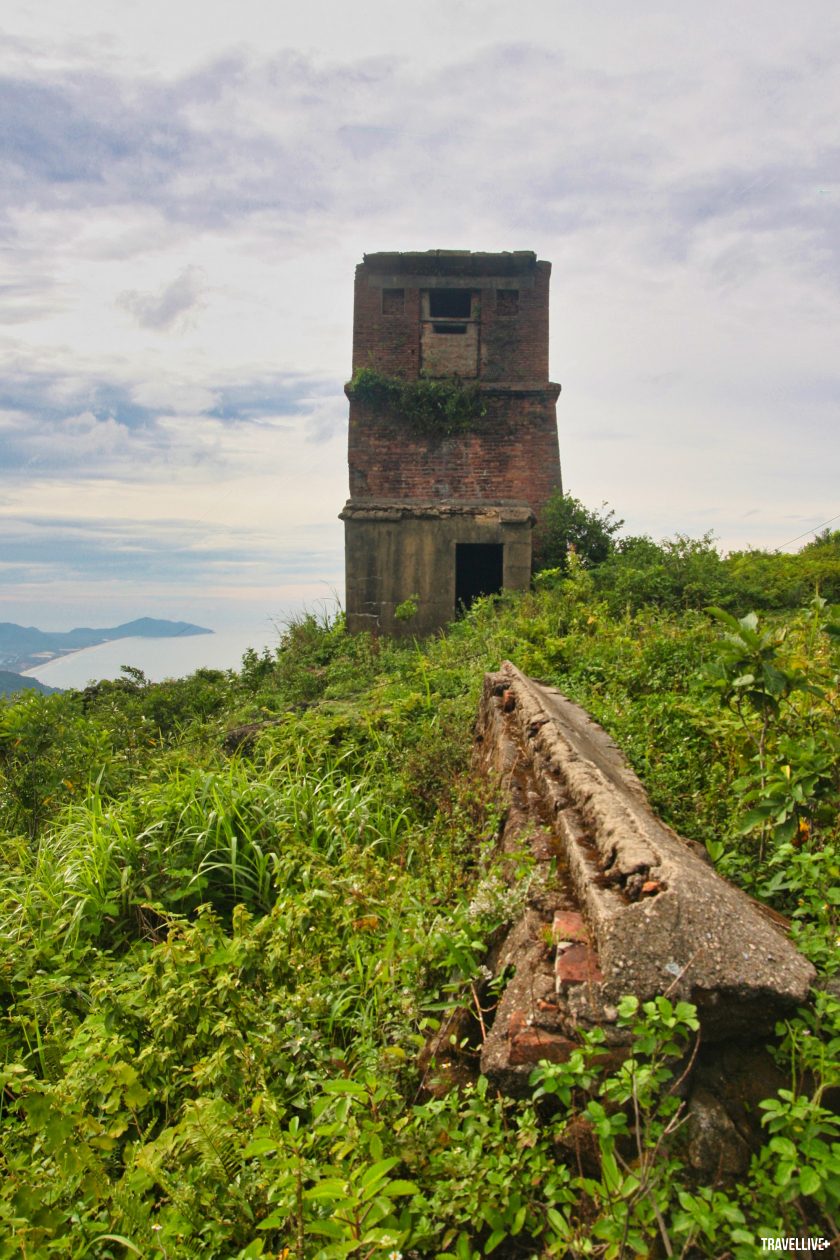
Hue Gate and Lang Co beach in the North

Bunker window on the 2nd floor of Da Nang gate (built later)
It is a pity that for a very long time this historical relic was forgotten and left to deteriorate. It was not until April 2017 that Hai Van Quan was recognized as a National Monument.
On December 19, 2021, the Department of Culture, Sports and Tourism of Da Nang City coordinated with the Hue Monuments Conservation Center to organize the groundbreaking ceremony.conservation, restoration and rehabilitation projectsand promote the value of Hai Van Quan relic. Hopefully, from now on, this historical relic will receive more attention from authorities as well as domestic and foreign tourists.






